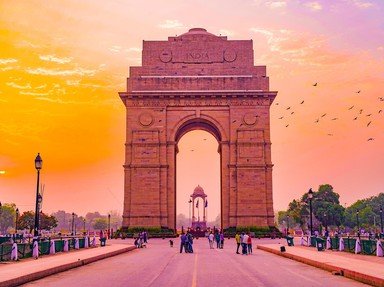Quiz Answer Key and Fun Facts
1. The story of the Black Hole of Calcutta began in the early eighteenth century, with the establishment of Fort William in the eastern Indian city of Calcutta. Which famous East India Company founded the fort to protect against potential attacks from eastern neighbors?
2. Local rulers were none too happy with the construction of Fort William, particularly the nearby Nawab of Bengal, named Siraj-ud-Daulah. The Nawab was a Muslim official who held power in which Muslim dynasty that preceded colonialism in Indian history?
3. In 1756, the Company began to ramp up Fort William's defenses for fear of attack by other colonizers. Afraid that the fort was imposing itself upon the Indians and that it was damaging the self-rule of local leaders, the Nawab built up an army and attacked the fort. He succeeded easily. Why did the Indians take control of the well-defended fort so quickly?
4. Here's where the Black Hole of Calcutta comes in. On June 21, 1756, the Nawab of Bengal allegedly forced 146 prisoners of his siege on Fort William into a very small room as a prison, and left them there until morning. According to John Holwell, the most useful source about the incident, 123 people died for what reason?
5. Holwell survived the terribly cramped and deadly conditions inside the prison, along with just a handful of his fellows, to give his account of the Black Hole of Calcutta. What happened to him and the rest of the survivors?
6. Many scholars today believe that the Black Hole of Calcutta was strongly exaggerated to rile Europeans against the "brutality" of Indian culture. Which one of the following is NOT one of the pieces of evidence that suggests Holwell's account is inaccurate?
7. One interesting part of Holwell's narrative is that he claimed it wasn't just European soldiers forced into the Black Hole, but other people as well. He alleged that included among the prisoners were Indian soldiers in service for the East India Company. What common name was given to these fighters, who led an influential "mutiny" almost exactly a century later?
8. The Black Hole of Calcutta rallied Europeans against the Indians and led to a full-scale invasion a year later. At which famous battle in Indian history did the East India Company defeat the forces of Nawab Siraj ud-Daulah and begin its dominance inside the country?
9. A memorial was made to those who died in the Black Hole of Calcutta- Holwell created a tablet to honor the deceased, and the fort was used as a warehouse for several years, before it was adapted into an obelisk. What happened to the tablet?
10. In 1940, the restored monument to the Black Hole of Calcutta became controversial as the day of India's independence grew nearer. Specifically, which Indian independence movement leader, famous for his motto "Give me blood and I will give you freedom," lobbied for the destruction of the monument?
Source: Author
adams627
This quiz was reviewed by FunTrivia editor
bloomsby before going online.
Any errors found in FunTrivia content are routinely corrected through our feedback system.

